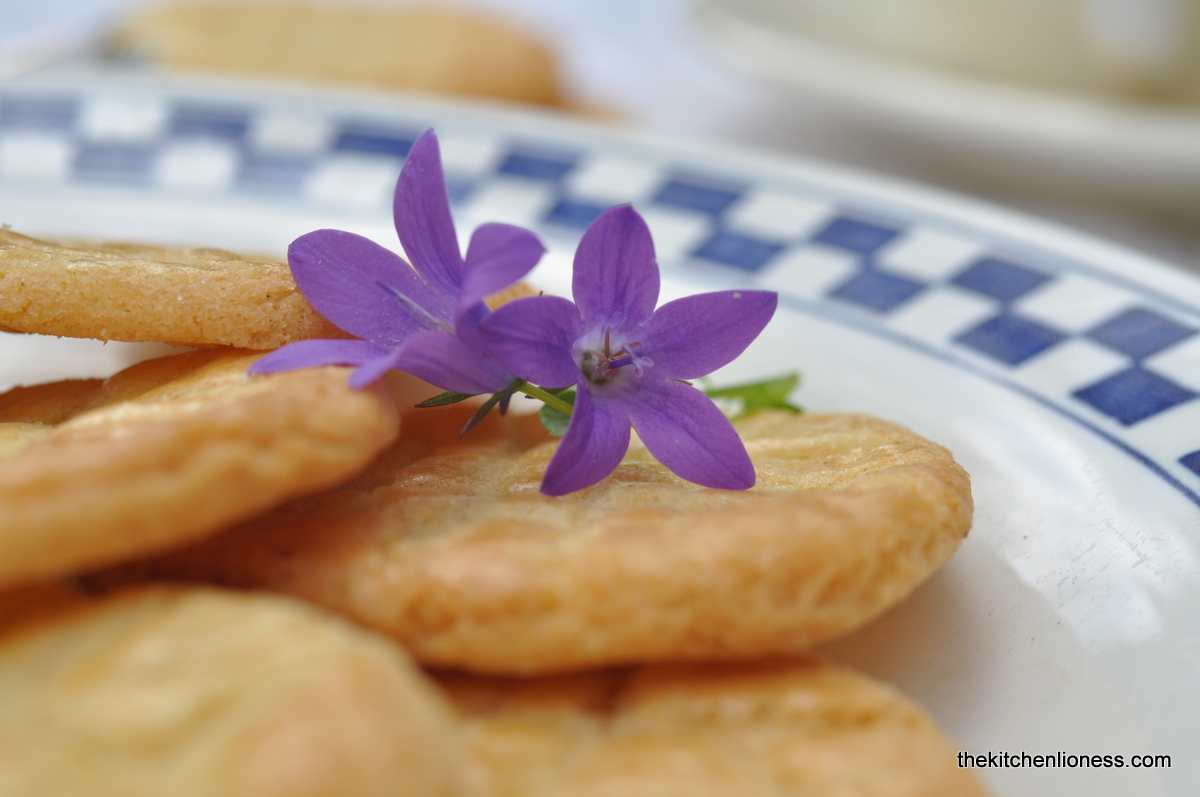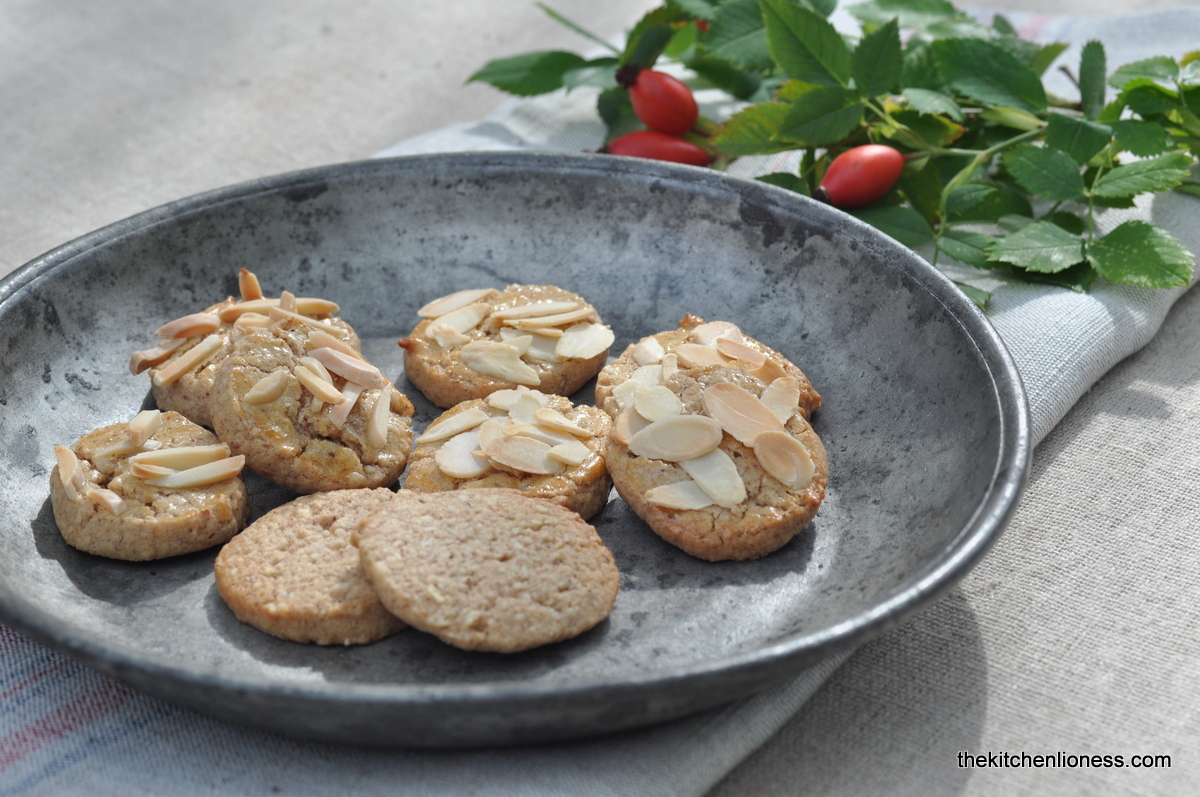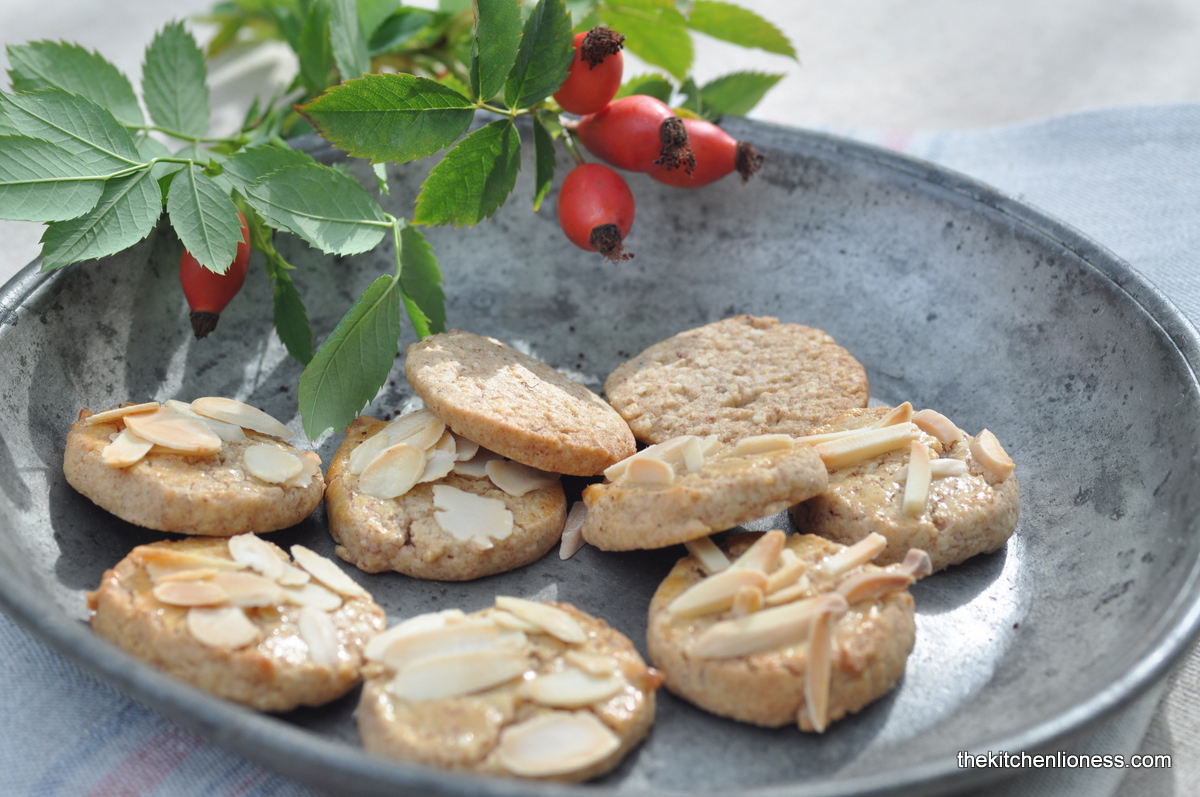Today, the Feast of Saint Michael (Heiliger Michael), also known as 'Michaelmas' (Michaelistag) is celebrated in the Western churches. In the Roman Catholic Church, Michaelmas is now more commonly celebrated as the Feast of Saints Michael, Gabriel, and Raphael, the three archangels (Erzengel), in the Anglican Church, its proper name is the 'Feast of St. Michael and All Angels'. September 29 was originally dedicated only to St. Michael, with St. Gabriel formerly on March 24, and St. Raphael on October 24. The 1969 reform of the General Roman Calendar combined these feast days for today's triple feast.
As Michaelmas falls near the equinox, the day is also associated with the beginning of autumn and the shortening of days. It was the time at which new servants were hired or land was exchanged and debts were paid.
St. Michael is considered to be one of the principal angelic warriors, protector against the dark of the night and the Archangel who fought against Satan and his evil angels. It was believed that negative forces were stronger in darkness and so families would require stronger defences during the later months of the year.
The veneration of St. Michael began in the Eastern Church in the 4th century and had spread to Western Christianity by the 5th century. The feast date of May 8 commemorates the dedication of a sanctuary to St Michael at Monte Gargano in Italy in the 6th century.
During the Middle Ages, Michaelmas was a great religious feast and many popular traditions grew up around the day, which coincided with the harvest in much of Western Europe. In England and Germany it was the custom to eat goose (Michelgans) on Michaelmas, which was supposed to protect against financial need for the next year. In Ireland, finding a ring hidden in a Michaelmas pie meant that one would soon be married. In Germany, there was also the tradition of baking a special bread called Michaelsbrot with sourdough, rye and wheat. In France there are the so-called 'Sablés du Mont-Michel', delectable sandy butter cookies with hail from Normandy, hence the recipe calls for salted butter from Normandy and takes its name from the world famous Mont-Saint-Michel Abbey.
The long history of Mont-Saint-Michel began in 708, when Bishop Aubert of Avranches erected a first sanctuary on Mont Tombe in honor of the Archangel Michael (the island was originally called Mont-Tombe but became known as Mont-Saint-Michel in the 8th century). According to legend, in 708 the Bishop received, during his sleep, three times the order from St. Michael to erect an oratory on the Mont Tombe . The archangel was reputed to have left his finger mark on Aubert's skull. On October 16, 709, the Bishop dedicated the church and put twelve chanoine there.
It rapidly became a pilgrimage center, and in 966 a Benedictine Abbey was built there. In 1203 it was partly burned when King Philip II of France tried to capture the mount. He compensated the monks by paying for the construction of the monastery known as La Merveille (The Wonder).
The island, which was fortified in 1256, resisted sieges during the Hundred Years’ War between England and France (1337-1453) and the French Wars of Religion (1562-98). The monastery declined in the 18th century, and only 7 monks were living there when it was dissolved during the French Revolution (1787-9). It became a state prison under Napoleon I (reigned 1804-14/15) and remained a prison until 1863. In 1874 it was classified as a historic monument and restored.
The abbey church that towers over the island has a 11th- and 12th-century Romanesque nave and a choir in Gothic style (1450-1521). The tower and spire, crowned by a statue of St. Michael, were added in the 19th century. The church is built over 3 crypts, the oldest dating probably from Carolingian times (8th-10th century). The exterior walls of the Gothic monastery La Merveille (built by 1228) combine characteristics of a military fortress and the simplicity of a religious building. The most striking sections are the refectory (Refektorium) with its high, narrow windows, and the cloister, with its sculptures. There is a panoramic view of the bay from the medieval walls (13th-15th century) on the Southern and Eastern sides of the Mount. The residential houses (now mainly hotels or tourist shops) along the narrow street winding up to the abbey date in some cases to the 15th century.
Since 1979, the site (the Mont-Saint-Michel as well as its bay) has been a UNESCO world heritage site. With more than 3.5 million visitors, the Abbey is among the most visited cultural sites in France. Since 1998 the Mont-Saint-Michel is part of the French Saint James' Way (Jakobsweg).
Sablés du Mont-Saint-Michel
(yields about 35 cookies, depending on their size)
Ingredients
- 125g lightly salted butter, room temperature (I suggest a lightly salted French butter from Normandy like the Beurre d’Isigny, demi sel)
- 100g superfine baking (caster) sugar
- 200g AP (plain) flour
- ½ tsp baking powder
- 3 tbsp milk, room temperature (I like to use full fat milk which means 3.5% around here)
- 8g pure vanilla sugar
Preparation
- 1 egg yolk (L), organic or free range
- 2 tbsp milk, again I like to use 3.5%
Preparation
- Melt the butter on medium heat, add the sugar and stir until it has dissolved.
- In a mixing bowl whisk together the flour with the baking powder. Then add the flour mixture to the butter mixture together with the milk and the vanilla sugar. Very carefully mix the dough just until it comes together.
- Shape the dough into a ball and wrap it into, flatten it lightly into a disk and leave it to cool in the refrigerator – best overnight but if stressed for time, two hours will also do.
- Take the dough out of the refrigerator, pre-heat your oven to 180°C (356°F), and line 2 cookie sheets with baking parchment.
- In a small bowl whisk together the egg yolk with the milk.
- Using 2 sheets of parchment paper (NOTE: using additional flour here would make the dough tough), roll out the cookies to a 5mm (0,2 in) thickness. Using a glass or cookie cutter (ø 5 cm/2 in) cut out as many rounds as possible and transfer them to the prepared baking sheets.
- Brush all cookies lightly with eggwash and score the cookies with the tines of a fork. Then transfer the cookie sheets to the oven for about 10 to 12 minutes or until golden.
- Let the cookies cool for a few minutes then transfer them to a cooling rack to cool completely – these cookies will keep for a few days if kept in a cool place in an airtight container.
Sablés du Mont Saint-Michel (Normannisches Buttergebäck Mont-Saint-Michel)
(für zirka 35 Kekse)
Zutaten
Für den Teig
- 125g Salzbutter, Zimmertemperatur (wie ‚Beurre d´ Isigny, demi sel)
- 100g feinster Backzucker
- 200g Weizenmehl (Type 450)
- ½ TL Backpulver (Weinstein Backpulver)
- 3 EL Milch, Zimmertemperatur, (ich nehme immer Vollmilch)
- 8g Bourbon Vanillezucker
Zum Bestreichen
- 1 Eigelb
- 2 EL Milch (Vollmilch)
Zubereitung
- Die Butter schmelzen lassen, den Zucker hinzugeben und rühren bis er sich aufgelöst hat.
- Das Mehl mit dem Backpulver mischen, dann die Butter-Zucker-Mischung zusammen mit der Milch und dem Vanillezucker dazugeben und vorsichtig zu einem glatten Teig verkneten.
- Zu einer Kugel formen und in Frischhaltefolie wickeln, etwas flach drücken und am besten über Nacht aber wenigstens 2 Stunden kalt stellen.
- Den Backofen auf 180°C vorheizen. Zwei Backbleche mit Backpapier belegen.
- Das Eigelb mit der Milch verquirlen.
- Den Teig zwischen Backpapier ausrollen (5 mm dick) und mit Ausstechern oder einem Glas, Kreise (ø 5 cm) ausstechen. Am besten kein weiteres Mehl nehmen, da das Gebäck sonst zu trocken/hart wird.
- Die Kreise auf ein mit Backpapier ausgelegtes Backblech setzen, dabei zwischen den Kreisen etwas Platz lassen. Kreise mit verquirltem Eigelb bestreichen und mit einer Gabel mit Mustern verzieren.
- Dann im vorgeheizten Backofen bei 180°C auf der 2. Schiene von unten 10 bis 12 Minuten goldgelb backen.
- Kreise vom Backpapier lösen und auf einem Kuchengitter auskühlen lassen.
Please note that this blog post is part of my series for a local/regional radio station, where, throughout the years, I present festive bakes that are closely tied to various holidays and seasons. If you are interested, have a LOOK & LISTEN (in German) HERE.
The various recipes of my series can be found here:
- in January, for Three Kings Day (Dreikönigstag) two kinds of Galette des Rois (Dreikönigskuchen) (HERE)
- for Lent (Fastenzeit) Lenten Soup with Lenten Beugel (Fastenbeugel) (HERE)
- for Good Friday (Karfreitag) the delicious Hot Cross Buns (HERE)
- for Pentecost /Whitsun (Pfingsten) the fun Allgäu Bread Birds (Allgäuer Brotvögel) (HERE)
- for the beginning of the summer vacation, the lovely Sacristains (Almond & Sugar Puff Pastry Sticks) (HERE)
- for St Christopher's Day (St Christophorus), the energy-packed Müsli Power Bars (Müsli Energieriegel) (HERE)
- for Mary's Assumption Day (Mariä Himmelfahrt) my Tear & Share Herb Bread (Kräuterbrot) (HERE)
- for Mary’s Birthday (Mariä Geburt) some very pretty Mary’s Sweet Rolls (Süße Marienküchlein) (HERE)
- for Thanksgiving (Erntedankfest) a delicious and seasonal Thanksgiving Apple Tart with Frangipane (Erntedank Apfeltarte mit Mandelcreme) (HERE)
- for Halloween a Pumpkin Spice Bundt Cake (Kürbis-Gewürzkuchen)
- for St Martin's Day (Martinsfest) the cheerful Sweet Dough Men (Weckmänner) (HERE)
- for St Andrew's Day (Andreastag) a classic Petticoat Tails Shortbread (HERE)
- for Christmas Day (Weihnachten) these Traditional German Gingerbread (Elisenlebkuchen) (HERE)
- for New Year's Eve a New Year's Eve Pretzel (Neujahrsbretzel)
- for Candelmas Day (Mariä Lichtmess) some delightful Navettes de Saint Victor (HERE)
- for Carnival Season (Karneval) these lovely Carnival Doughnuts (Karnevals-Krapfen) (HERE)
- for St Patrick's Day a traditional Irish Brown Soda Bread (Irisches Sodabrot)(HERE)
- for St Joseph's Day a long-forgotten but thankfully re-discovered Sweet Cotton Bread (Baumwollbrot)(HERE)
- for Palm Sunday (Palmsonntag) these very pretty Palm Pretzels (Palmbrezel) (HERE)
- for Easter Sunday (Ostersonntag) an Easter Brunch at Home with Tarte Flambée (Flammkuchen) (HERE)
- for the Month of May (Marienmonat Mai) these elegant Visitandines de Nancy (HERE)
- for Pentecost/Whitsun (Pfingsten) festive Beignets (Heiliggeistkrapfen) (HERE)
- for St John's Day (Johannistag) these sweet St John Cakelettes (Johannisküchlein) (HERE)
- for St Margaret’s Feast Day (Margaretentag)the delightful teacake called St Margaret’s Cake (Margaretenkuchen) (HERE)
- for St Hildegard's feast day these wonderful spice cookies called Cookies of Joy (Nervenkekse)(HERE)
- for Michaelmas (Michaelistag) buttery Sablés du Mont-Saint-Michel (Buttergebäck)(HERE)
- for Halloween a moist and fruity Barmbrack (Irischer Teekuchen) (HERE)- more delicious treats to come very soon.




















